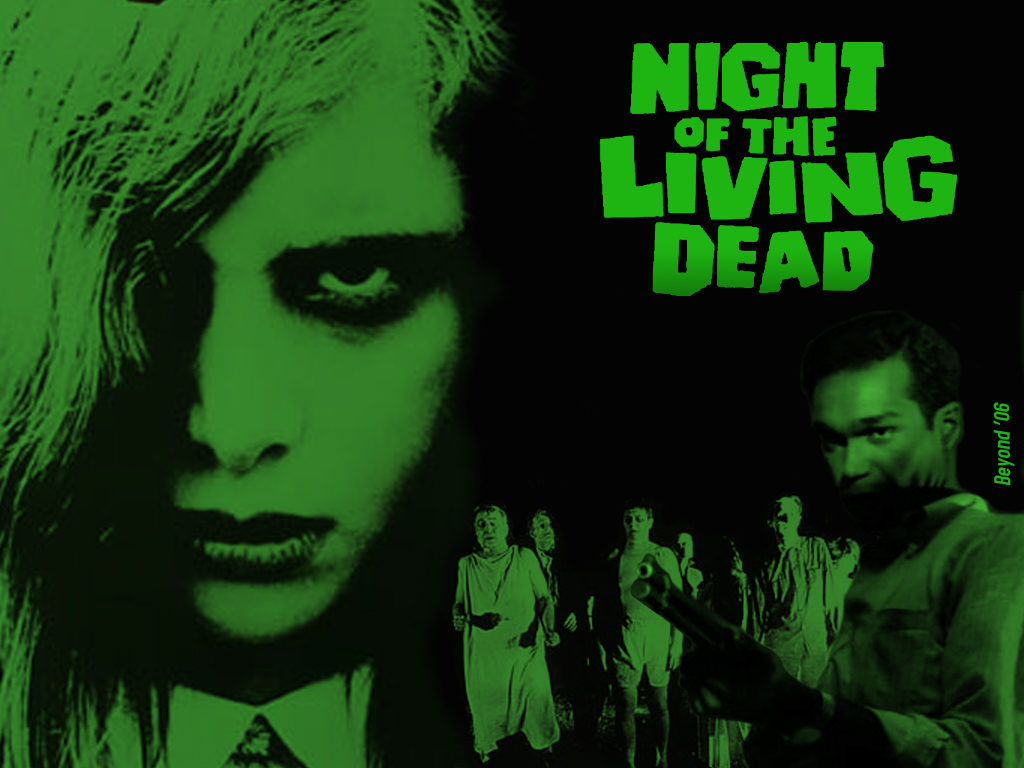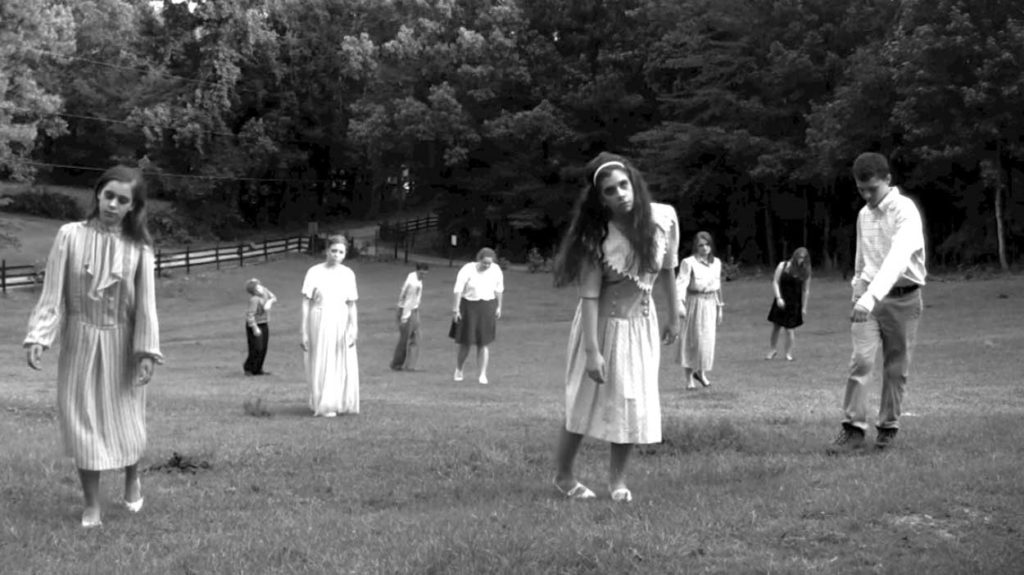
1. Night of the Living Dead (1968; dir. George Romero) – Predictable choice maybe, but this isn’t just the granddaddy of ’em all; it’s the best, and I love it every time I watch it. Peter Bogdanovich tells a story of Orson Welles talking about The Third Man and daring him to name one great performance in color. Point taken: there’s just something classic and classy about black and white, even with zombie movies, that color simply can’t capture. And “They’re coming to get you, Barbara” is to horror what “I’ll make him an offer he can’t refuse” is to gangster flicks. Instantly recognizable. Iconic. One quote used to illicit fear, to scare younger siblings, to sometimes joke around with. This film tapped into our most primal fears as human beings, aided and abetted by the black and white cinematography: the end the world, barricaded in a little house with no means of communication and no understanding of what’s happening with an unrelenting enemy emerging from the darkness, bent solely on our absolute destruction. The world ends not with a bang or a whimper, but a moan, with teeth gnawing into your flesh, lips smacking, the undead swarming and tearing you limb from limb while you scream and thrash about helplessly. Over forty years have passed since it was made; I watch it every year on Halloween night, and it’s still terrifying.
This is also where Romero began using the zombie film to provide cultural commentary. But whereas he might have tried too hard in later films like Day or Land, here he achieves a astute picture of society at the time unintentionally, and that seems to make it most effective. Recently I was reading an article (that I unfortunately can’t currently find the link to), which commented on what made Blair Witch Project such an effective medication on the subjective nature of reality. The writer states that it wasn’t some dumb discussion in the woods by the characters (this doesn’t happen); it was simply presenting the film as something “found,” something that might have been true but might have been made up. The filmmakers simply made the scary movie they wanted to make and allowed the public to interpret it any way they wanted. In short, any commentary was imposed on the film and not the other way around.

Romero did a similar thing with Night of the Living Dead, providing this element, not by getting all preachy in the film, but simply by casting a black man as the leader and hero of the film way back in tumultuous 1968. The only other movies doing this back then were Sidney Poitier’s Lilies of the Field and To Sir, With Love. And yet, with Night, Romero says he didn’t cast Duane Jones because of his skin tone or to make a statement. He cast him because he was the best actor available at the time. There is no comment on his skin color, no nod or wink or aside regarding it, and I suspect that this is because when Romero wrote it, he wasn’t thinking about it, but it ended up becoming one of the most talked about aspects at the time.
There’s no caricature or stereotyping here. Ben, the character Jones plays, is bold, level-headed, always thinking of a way to combat the zombies, formulating a plan, trying to keep the other survivors calm. He holds himself together so well that by the end of the movie, he’s the last man standing, but this being ’68, the strong black man wouldn’t live to see the credits. A band of rednecks hunting zombies mistake Ben for one of the enemy and put a bullet through his head, solidifying Night not only as a monumental achievement in horror film making, but an accurate representation of the racial conflicts that were tearing at the heart of America at that time. Romero was later given more money and made bigger movies with bloodier kills, but he never made a better zombie film than this first one.
Don’t believe me? Here you go. Watch the whole thing yourself in the clip below and try to tell me it isn’t great. I bet you’ll still jump a few times, even with this tiny format.
https://www.youtube.com/watch?v=GiOd5Cm1LDo

There are no comments yet